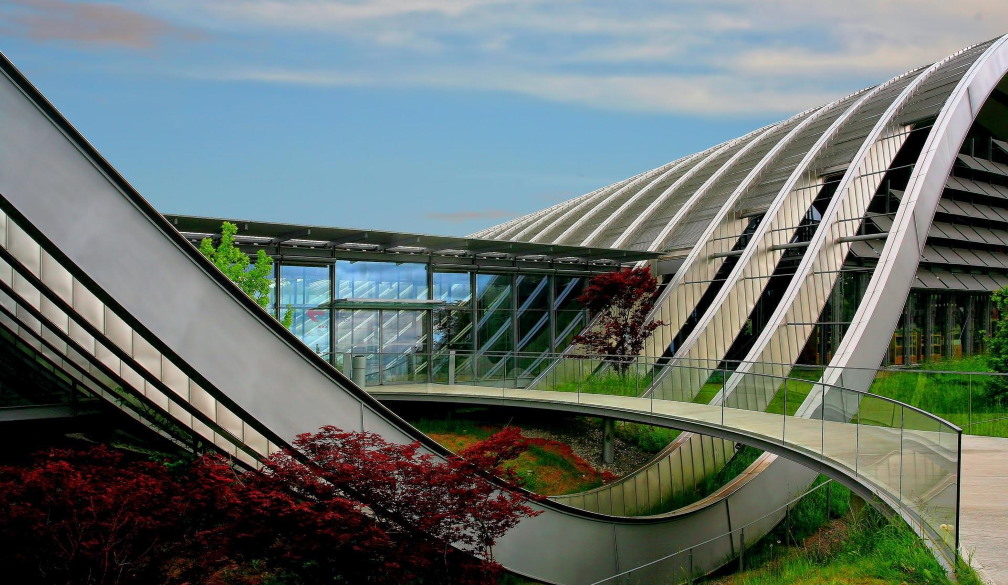5 Interesting and Important Trends in Commercial Architecture and Design

Architecture and design are constantly changing, especially in the commercial sector. Driven by consumer trends, industry shifts, innovation, technology, as well as socio-economic changes, every year there is something new to see in commercial architecture and interior design. What’s more, this sector is always changing according to the needs of different business fields, such as office design, hotel and restaurant design, retail design, and many more.
When you put all of that together, you have yourself a rich and diverse sector that is always bringing something new to the modern customer. Yet, some trends prevail across the industry and shape the sector as a whole. The trends we’ll be talking about today are currently present all across commercial architecture and design around the world, and they are rapidly changing consumer behaviour, experiences, and influencing the global consumer.
Without further ado, here are the five trends you should keep an eye on this year.
Embracing the biophilic design
In the hectic, bustling urban environment, we often find ourselves completely lacking in contact with the natural world. Sure, we see a tree here and there on our way to work, and maybe we take a shortcut through a nearby park, but that doesn’t really count as a nature experience. This is a big problem nowadays, one that not only affects our mental health, but severely impacts the quality of life in a big city.
To combat the effects of the urban island and try to bring the modern city-dweller closer to nature, architecture and interior design is rapidly shifting to biophilic design solutions. The aim here is to leverage natural materials to create green commercial spaces and solutions that are both functional and aesthetically pleasing. From green roofs to office greenery and vertical gardens in enclosed spaces, all the way to sustainable office materials and earthy tones, the biophilic design is one of the best solutions for a generation deprived of nature’s influence.
Building a recognizable brand identity
In the global business landscape, branding is everything. With so many choices at their disposal, customers are nowadays extremely picky about the brands they choose, and employees are even pickier about the brands they work with. Employee and customer retention have become virtually impossible without good branding, because there is nothing to keep people from switching providers and employers as soon as a better deal comes along.
That’s why brand-building has become such a big element of today’s architectural solutions, as well as interior and exterior design. Designing the ideal office layout is no longer just about the open floor plan or the various gadgets at every workstation, it’s about connecting the employee with the brand through visuals, values, various little motivators, the brand’s culture, and more.
The same goes for a commercial space where customers gather like restaurants, hotels, coffee shops, and retail businesses.
Focusing on specialized lighting applications
One of the key elements of commercial architecture and design is the proper implementation and optimization of lighting solutions. Lighting plays a vital role in how the customer or the employee perceives their environment, and it invariably affects the quality of their experience as well as the quality of work in highly specialized workspaces.
For example, research and medical institutions require that the technology used in clean rooms illuminates the entire space equally and in the right hue to minimise hazards and errors while improving efficiency and productivity. It’s a nuanced science, optimizing the lighting for every commercial space, prompting manufacturers and designers to focus heavily on the exact requirements of every working environment, be it a hospital, a restaurant, and office space, or anything in between.
Investing heavily in sustainability
Another crucial element of modern architecture, and especially construction, is sustainability. Using the right materials for sustainable construction is not only the best way for commercial investors to save money, but it’s also a great way to future-proof a space, minimize long-term financial loss, and attract a modern crowd of customers.
People nowadays want to work in sustainable environments, and customers want to venture into stores and commercial spaces that stand up for the sustainable cause. To show people that your business is investing in sustainability, it’s important to use the right construction methods and materials.
Creating a community with interior design
Lastly, keep in mind that the nature of the modern commercial space is to bring people together. It might seem counterintuitive in the current COVID-19 climate, but it’s important to note that architecture and design thrives on this community-building aspect.
For example, decorating a café is very much about building a community of customers where people feel safe and relaxed, prompting them to keep coming back. Designing the interior is about allowing people to have a sense of privacy, but also to feel connected with the overarching culture and community that radiates throughout the space.
Wrapping up
We are seeing big changes in architecture and design in the commercial sector throughout the last decade. In 2021 and beyond, these trends will dominate the commercial scene in an attempt to bring people together, ensure sustainability, and elevate efficiency and productivity.

